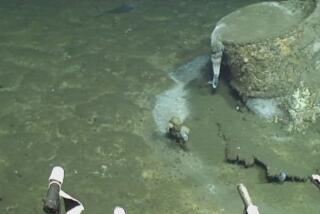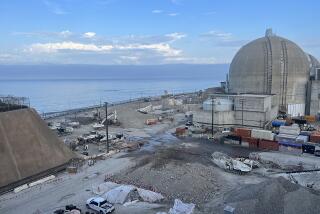Study Details Onofre Plant’s Effect on Sea
- Share via
OCEANSIDE — A 15-year study of the San Onofre nuclear power station’s effects on the marine environment, released Wednesday, concludes that the plant has done some damage to the nearby ocean area but it is not the full-blown ecological disaster predicted by environmentalists.
The results of the $46-million study were turned over this week to the California Coastal Commission. The study was conducted by the Marine Review Committee, a three-man team of biologists appointed by the Coastal Commission in 1974 to provide an independent scientific review of the plant’s impact.
Dire Predictions
The committee was formed after a series of hearings on whether the plant should be allowed to expand from one reactor to three. At the time, environmental groups made dire predictions that the nuclear plant would wipe out the plankton population and destroy sea life, creating a virtual submarine desert off the coast of northern San Diego County.
The construction permit for the two reactors was granted, but Southern California Edison Co., the operator of the plant, was ordered to pay for a long-term study of the environment.
Among the findings of the Marine Review Committee was that the power plant kills an estimated 20 tons of fish per year as they are sucked into the generator’s intake pipes, which draw seawater in to cool the reactors.
The study also concluded that the plume of water which is discharged from the plant tends to stir up the sediment on the ocean floor and cut the level of natural light on the bottom, sometimes as much as 16%. The diminished light harms the fish population and damages offshore kelp beds and the invertebrate sea creatures that live in the kelp.
Not Hurt by Operations
The report concluded that the plankton on the ocean floor and certain bottom-dwelling fish and crabs were not hurt by the plant’s operations.
The report recommends a number of measures that could be taken to reduce the damage to the marine environment, including the construction of artificial reefs, restoration of wetlands and reducing the flow of water taken in for cooling purposes. It would cost about $30 million to implement all the suggestions, according to Byron J. Mechalas, manager of environmental research for Southern California Edison and one of the three scientists on the review committee.
More to Read
Sign up for Essential California
The most important California stories and recommendations in your inbox every morning.
You may occasionally receive promotional content from the Los Angeles Times.










